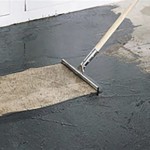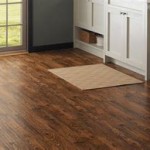How To Install Vinyl Plank Flooring On A Wall
Vinyl plank flooring, celebrated for its durability and aesthetic appeal, isn't limited to floors. Its versatility extends to wall applications, offering a unique and cost-effective design element for various spaces. This article provides a comprehensive guide to installing vinyl plank flooring on a wall, covering necessary tools, preparation, installation techniques, and essential considerations for a successful project.
1. Gathering Tools and Materials
Proper preparation is crucial for any successful installation. Before beginning, gather all necessary tools and materials to ensure a smooth and efficient process. This includes the vinyl plank flooring itself, measuring tape, a level, a pencil, safety glasses, a utility knife with extra blades, construction adhesive suitable for vinyl and the wall material, spacers, a jigsaw or miter saw for cutting planks, and a rubber mallet or tapping block.
Calculating the required amount of flooring is essential to avoid delays. Measure the square footage of the wall to be covered and add 10-15% extra to account for cuts and waste. Ensure the chosen vinyl plank flooring is appropriate for wall installation. Some planks are specifically designed for vertical application and may offer features like enhanced adhesion.
2. Preparing the Wall Surface
The wall surface must be clean, dry, and level before installation begins. Clean the wall thoroughly to remove any dust, dirt, grease, or old wallpaper. Patch any holes or imperfections with spackling paste and sand smooth once dry. For walls with significant imperfections, consider installing a thin underlayment to create a smoother and more uniform surface. This will also help to minimize sound transmission.
If the wall is painted with a glossy finish, lightly sand it to create a better bonding surface for the adhesive. For walls previously covered with wallpaper, ensure all traces of adhesive are removed. A primer designed for bonding may be necessary for certain wall surfaces, particularly those prone to moisture or efflorescence.
3. Installing the Vinyl Planks
Begin installation by marking a level horizontal line at the bottom of the wall where the first row of planks will be placed. This line serves as a critical reference point to maintain straight and level rows throughout the installation. If installing planks vertically, begin with a plumb vertical line at one edge of the wall.
Apply construction adhesive to the back of the first plank in a zig-zag pattern or as instructed by the adhesive manufacturer. Position the plank against the wall, aligning its bottom edge with the level line. Use spacers between the plank and the floor to maintain a consistent expansion gap. Gently tap the plank with a rubber mallet or tapping block to ensure proper adhesion.
Continue installing planks, working across the wall from left to right or right to left. Interlock the planks according to the manufacturer's instructions, ensuring a tight and seamless fit. Use a level periodically to verify the alignment and adjust as needed. For intricate cuts around outlets or other fixtures, use a jigsaw or miter saw to create precise shapes.
Maintain consistent spacers between each plank and the adjacent wall to ensure a uniform expansion gap. This gap allows for the natural expansion and contraction of the vinyl planks due to temperature and humidity fluctuations, preventing buckling or warping.
When reaching corners, carefully measure and cut the planks to fit. Use a miter saw for angled cuts to create a professional finish. Consider using corner trim pieces to conceal any gaps or irregularities at the corners.
For installations covering a large wall area, consider working in sections. This allows for manageable portions and reduces the risk of adhesive drying prematurely. Ensure each section seamlessly integrates with the adjacent sections by maintaining consistent spacing and alignment.
Clean any excess adhesive promptly with a damp cloth before it dries. Once the installation is complete, allow the adhesive to cure fully according to the manufacturer's instructions before placing any objects against the wall.
By following these steps and paying attention to detail, installing vinyl plank flooring on a wall can be a rewarding project that enhances the aesthetic appeal and functionality of any space. Always refer to the manufacturer's specific instructions for the chosen vinyl plank product as they may offer additional guidance and recommendations.

How To Install Vinyl Plank Flooring On Walls Europine

How To Install Vinyl Plank Flooring Anything

Laminate Flooring Wall Installation

Diy Wood Accent Wall Using Vinyl Planks Love Renovations

Install Vinyl Plank From A Hallway Into Room No Transition Strip

How To Horizontally Install Pergo Laminate Flooring On Your Walls

Installing Vinyl Plank Flooring How To Fixthisbuildthat

How To Install Laminate Planks Vertically On A Wall

How To Install Vinyl Plank Flooring On Walls Europine

A Beginner S Guide To Installing Vinyl Plank Flooring Dumpsters Com
See Also







